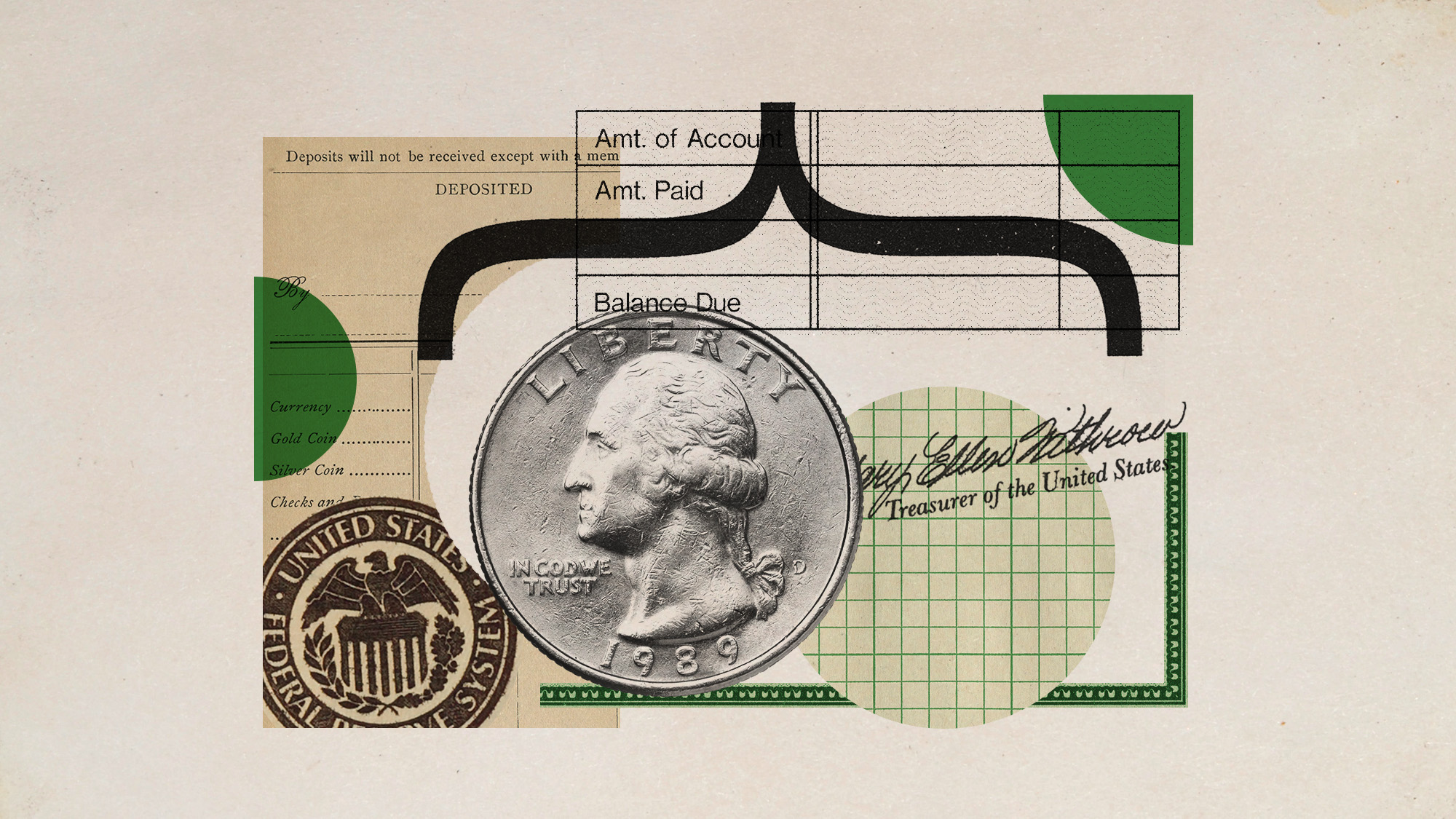How income tax brackets work and what's changing for 2026
See which bracket you are in — and how you might lower it


With the passage of Trump's signature tax and spending bill in July, a lot is poised to change tax-wise in the coming year. Among the bill's provisions was making permanent the tax brackets instituted by the 2017 Tax Cuts and Jobs Act (TCJA), which were previously set to expire at the end of 2025 and would have pushed some taxpayers into higher marginal tax rates.
That does not mean that tax brackets will remain exactly the same, however. Ahead of each new year, the IRS updates the income ranges for each tax bracket to take into account inflation. On the whole, "tax brackets will rise by about 4% for lower-income ranges and roughly 2% for higher earners," said CNBC Make It. These changes particularly are relevant for taxpayers on the cusp of one bracket or another.
First, a quick refresher on how income tax brackets work
Before we dive straight into the numbers, let's make sure we're all on the same page as far as how income tax brackets work. Put simply, a tax bracket "is the range of incomes taxed at given rates, which typically differ depending on filing status," said the Tax Foundation. Filing statuses include single filers, married couples filing jointly, married couples filing separately, and head of household filers, each of which has their own distinct tax brackets.
The Week
Escape your echo chamber. Get the facts behind the news, plus analysis from multiple perspectives.

Sign up for The Week's Free Newsletters
From our morning news briefing to a weekly Good News Newsletter, get the best of The Week delivered directly to your inbox.
From our morning news briefing to a weekly Good News Newsletter, get the best of The Week delivered directly to your inbox.
In the U.S., rates go up the higher someone's income is. So, a person who earns under $10,000 is taxed at a lower rate than someone whose annual taxable income is over $500,000. There are seven different tax brackets in the U.S., starting at 10% and topping out at 37%.
What are the 2026 income tax brackets and rates?
For federal income tax returns filed for tax year 2026 (meaning, the tax returns you file in early 2026), the following tax brackets and rates apply:
Single filers | |
Tax rate | Taxable income |
10% | Up to $12,400 |
12% | Over $12,400 to $50,400 |
22% | Over $50,400 to $105,700 |
24% | Over $105,700 to $201,775 |
32% | Over $201,775 to $256,225 |
35% | Over $256,225 to $640,600 |
37% | Over $640,600 |
Married couples filing jointly | |
Tax rate | Taxable income |
10% | Up to $24,800 |
12% | Over $24,800 to $100,800 |
22% | Over $100,800to $211,400 |
24% | Over $211,400 to $403,550 |
32% | Over $403,550 to $512,450 |
35% | Over $512,450to $768,700 |
37% | Over $768,700 |
Married couples filing separately | |
Tax rate | Taxable income |
10% | Up to $12,400 |
12% | Over $12,400 to $50,400 |
22% | Over $50,400to $105,700 |
24% | Over $105,700to $201,775 |
32% | Over $201,775 to $256,225 |
35% | Over $256,225 to $384,350 |
37% | Over $384,350 |
Heads of household | |
Tax rate | Taxable income |
10% | Up to $17,700 |
12% | Over $17,700 to $67,450 |
22% | Over $67,450 to $103,700 |
24% | Over $103,700 to $201,775 |
32% | Over $201,775 to $256,200 |
35% | Over $256,200 to $640,600 |
37% | Over $640,600 |
How will tax brackets change for 2026?
Perhaps what is most notable about tax bracket changes for 2026 is what won't change. With President Trump's One Big Beautiful Bill Act getting signed into law, the tax brackets introduced in the 2017 Tax Cuts and Job Act will become permanent going forward rather than expiring at the end of 2025, as they were set to do. "Without the new law, federal income tax rates would have reverted to their pre-2018 levels — when the top marginal rate was 39.6% — potentially increasing taxes for many households," said SmartAsset, a personal finance blog.
Otherwise, income brackets are "moving up for 2026, with a bigger bump for the lowest brackets because of this year’s new tax law," said The Wall Street Journal. This "overall adjustment of 2.7% comes in just under the current inflation rate."
A free daily email with the biggest news stories of the day – and the best features from TheWeek.com
Can you lower your tax bracket?
It certainly is possible to lower your tax bracket, and there are a number of ways you can go about doing it. This includes:
- Filing under a different status: How you file could affect which tax bracket you qualify for: "If you're married, filing a joint return with your spouse could qualify you for a lower tax bracket, or, depending on your income and circumstances, you may lower your tax bracket by filing an individual return," said USA Today.
- Contributing to a 401(k) or IRA: You may also lower your tax bracket by contributing to a 401(k) plan, as your contributions will lower your taxable income. Contributing to an IRA could also allow you to secure a tax deduction, which could help with lowering your tax bracket.
- Looking at the effect of standard vs. itemized deductions: Calculate how taking the standard deduction as opposed to itemized deductions shifts things, "since it could put you in a lower bracket, depending on your financial situation," said USA Today.
Becca Stanek has worked as an editor and writer in the personal finance space since 2017. She previously served as a deputy editor and later a managing editor overseeing investing and savings content at LendingTree and as an editor at the financial startup SmartAsset, where she focused on retirement- and financial-adviser-related content. Before that, Becca was a staff writer at The Week, primarily contributing to Speed Reads.
-
 Received a windfall? Here is what to do next.
Received a windfall? Here is what to do next.The Explainer Avoid falling prey to ‘Sudden Wealth Syndrome’
-
 How to save more for retirement next year
How to save more for retirement next yearthe explainer Secure yourself a suitable nest egg
-
 Received a gift card this holiday season? Here’s how to maximize it.
Received a gift card this holiday season? Here’s how to maximize it.The Explainer Make the most of your present
-
 Who will the new limits on student loans affect?
Who will the new limits on student loans affect?The Explainer The Trump administration is imposing new limits for federal student loans starting on July 1, 2026
-
 3 ways to reduce the cost of owning a car
3 ways to reduce the cost of owning a carthe explainer Despite the rising expense of auto insurance premiums and repairs, there are ways to save
-
 How to shop smarter with a grocery budget
How to shop smarter with a grocery budgetThe Explainer No more pushing your cart down the aisles on autopilot
-
 What will next year’s housing market look like?
What will next year’s housing market look like?The Explainer Here is what to expect from mortgage rates and home prices in 2026
-
 What are the pros and cons of a Roth conversion for retirement?
What are the pros and cons of a Roth conversion for retirement?Pros and Cons By converting a traditional IRA to a Roth IRA, retirees can skip paying taxes on their withdrawals


